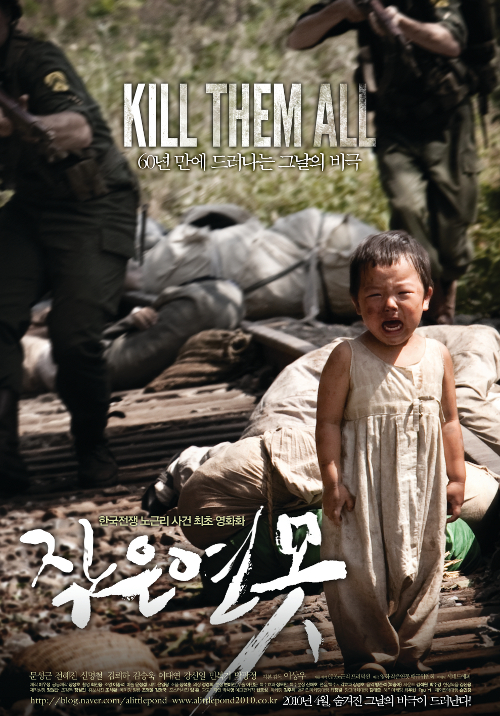David L. Chaplin II
Impunity Watch, Asia
SEOUL, South Korea – The Pentagon’s interest in No Gun Ri was released in January 2001. The Pentagon’s conclusion and investigation acknowledged the killing of civilians at No Gun Ri by US forces, but it limited its conclusion, interpreting the “killings that took place as accidental attacks, an unfortunate tragedy inherent to war” reported BBCs Jeremy Williams.

Air Force Colonel Turner Rogers wrote a memo the day before killings at No Gun Ri. The memo stated, “[t]he Army has requested we blitz all civilian refugee parties that are noted approaching our positions.”
The memo went on to confirm the instructions which were acted upon. The memo concluded that, “[t]o date, we have complied with the army request in this respect”.
After 50 years, “the only major American investigation into the killing of refugees focused exclusively on the activities of the US Army over a small geographic area during one month of a conflict that lasted three years”, stated BBC reported Jeremy Williams.
Bruce Cumings, Department of History chair at the University of Chicago, wrote the book “The Korean War” which depicts how little the U.S. knew about who it was fighting, why it was fighting, and even how it was fighting.
Though the North Koreans had a reputation for viciousness, according to Cumings, U.S. soldiers actually engaged in more civilian massacres. This included dropping over half a million tons of bombs and thousands of tons of napalm, more than was loosed on the entire Pacific theater in World War II.
Hanson Baldwin, the military correspondent for The New York Times was interviewed by Lawrence Velvel, Dean of the Massachusetts School of Law at Andover, described “North Koreans as locusts, like Nazis, like vermin, who come shrieking on. I mean, this is really hard stuff to read in an era when you don’t get away with that kind of thinking anymore.”
Cumings adds, “Rapes were extremely common. Koreans in the South will still say that that was one of the worst things of the war, [acknowledging] how many American soldiers were raping Korean women.”
Cumings believed that Douglas MacArthur, the General who commanded U.S. forces in Korea was prejudiced against Asians and badly underestimated their fighting capabilities.
He went on to say that, “[o]n the day the North Koreans invaded the South in force on June 25, 1950, MacArthur boasted, according to Cummings, ‘’I can beat these guys with one hand tied behind my back’. This stated even after the CIA had warned MacArthur that 200,000 Chinese troops were crossing the border into North Korea, MacArthur said, “I’ll take care of it, don’t worry about it, Chinamen can’t fight.”
In the end it was the Chinese who advanced U.S. forces, clearing them out of Korea in as little as two weeks.
A Truth and Reconciliation Commission charged with investigating wartime atrocities has found that American troops killed groups of South Korean civilians on 138 separate occasions during the Korean War. The Truth and Reconciliation Commission is led by operations President Lee.
“We welcome the efforts of the Republic of Korea to investigate abuses of human rights and efforts to correct any possible inaccuracy in the historical record,” said Mark C. Toner, a State Department spokesman.
Lee Chang-geun, 77, whose parents were among an estimated 300 South Korean soldiers, railway officials, students and other civilians killed on July 11, 1950, when American aircraft bombed the train station in Iri, a southern town many miles behind the front line said:
“I want to ask the Americans: Is it O.K. to bomb civilians by mistake?” Mr. Lee said. “I want to ask: Just because their military came to help South Korea, is it O.K. to kill South Korean civilians and keep mum about it?”
An estimated 855 refugees were killed, including 200 crammed inside a cave and suffocated by fires set off by air attacks; 100 huddled on a beach and shelled by an American ship; and 35 attacked by American aircraft in Kyongju, a town behind the lines in the south, reported Choe Sang-Hun of the New York Times.
“They have so far uncovered just a tip of the iceberg,” said Oh Won-rok, 70, who said his father was killed without trial by the South Korean police in July 1950. “So many victims did not come forward [during tribunal hearings], out of fear he said.
For more information, please see:
BBC – Kill ’em All: The American Military in Korea – 17 February 2011
Global Research – The Korean War: The “Unknown War”. The Coverup of US War Crimes – 16 March 2011
New York Times – Korean War Panel Finds U.S. Attacks on Civilians – 9 July 2009